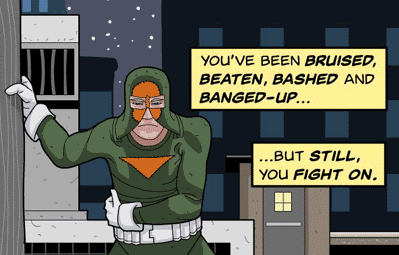 Before he became a regular artist for Black Gate, Bernie Mireault was already something of a Renaissance man in the comics industry. He’s been a writer, artist, letterer, and highly acclaimed colorist, and worked with Matt Wagner (Grendel), Joe Matt, Mike Allred, and many others. His comics include Dr. Robot, Bug-eyed Monster, The Blair Witch Chronicles, and his masterpiece, The Jam.
Before he became a regular artist for Black Gate, Bernie Mireault was already something of a Renaissance man in the comics industry. He’s been a writer, artist, letterer, and highly acclaimed colorist, and worked with Matt Wagner (Grendel), Joe Matt, Mike Allred, and many others. His comics include Dr. Robot, Bug-eyed Monster, The Blair Witch Chronicles, and his masterpiece, The Jam.
Our first meeting (that we know of) was in 1985, when Bernie crashed at my home in Ottawa, Canada. I was living with my parents while I studied at the University of Ottawa, and Bernie and his fellow creators with Montreal-based Matrix Comics were attending a local comics con. Bernie had just published the first issue of Mackenzie Queen, a marvelous piece of satirical horror featuring an exiled demon with a taste for dripping meat, who learns to be satisfied with Corn Flakes (“at least they drip.”) It was one of the first comics to make me laugh out loud. I’d been corresponding with Mark Shainblum at Matrix for months, and when I learned he was coming to town, I graciously offered my parent’s home as crash space (pretty sure I neglected to check with my parents first, which is part of what made it so gracious). Mark brought Gabriel Morrissette and Bernie Mireault, and the rest is history.
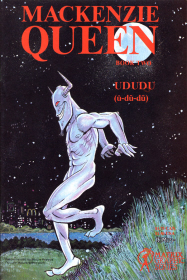 I say “first meeting that we know of” because Bernie and I were born in the exact same (and very small) place — a Canadian Air Force base in Marville, France — only a few years apart in the early 60s. Did we pass briefly as toddlers in the officer’s mess, and maybe compare our love for cartoons and comics while our fathers saluted each other over trays of french bread and beans? Probably not. But hey, man. It’s possible.
I say “first meeting that we know of” because Bernie and I were born in the exact same (and very small) place — a Canadian Air Force base in Marville, France — only a few years apart in the early 60s. Did we pass briefly as toddlers in the officer’s mess, and maybe compare our love for cartoons and comics while our fathers saluted each other over trays of french bread and beans? Probably not. But hey, man. It’s possible.
We lost touch for a few years when I moved to the US to finish grad school (and meet a girl from California and get married, but that’s another story). But I followed Bernie’s career closely. It wasn’t hard — he was all over the place, from Wonder Woman to Mr. Monster to Tales of the Batman. He even showed up — along with Matt Wagner — in Joe Matt’s autobiographical classic, Peep Show, as a minor character named only “Bernie.” But I recognized him immediately. Who wouldn’t?
But enough of trying to describe how cool Bernie is. To understand, you need to experience his work. And now you can!
…
Read More Read More
 I’ve been in reviewer overload lately, reading, taking notes, and penning reviews for the next issue of Black Gate. But, more than that, I’ve also been coordinating our crop of reviewers this time out, and thinking in terms of what exactly it is that ought to be in the review section of the magazine, not just in the reviews I put up on my own website. Having done over 50 reviews in the last year and a half or so, I think I’ve learned a few things, and I’d like to share my thoughts on what a good review should consist of. And at the end of this essay I’ll also offer some practical advice to anyone that wants to become a web reviewer themselves and share the reasons behind just why someone would want to take the time to review a book in the first place.
I’ve been in reviewer overload lately, reading, taking notes, and penning reviews for the next issue of Black Gate. But, more than that, I’ve also been coordinating our crop of reviewers this time out, and thinking in terms of what exactly it is that ought to be in the review section of the magazine, not just in the reviews I put up on my own website. Having done over 50 reviews in the last year and a half or so, I think I’ve learned a few things, and I’d like to share my thoughts on what a good review should consist of. And at the end of this essay I’ll also offer some practical advice to anyone that wants to become a web reviewer themselves and share the reasons behind just why someone would want to take the time to review a book in the first place.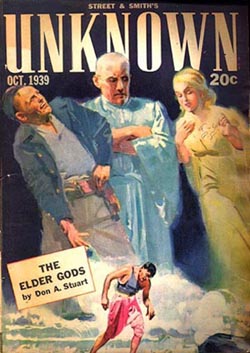
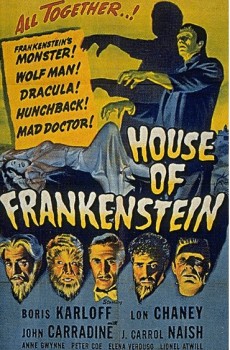 House of Frankenstein (1944)
House of Frankenstein (1944)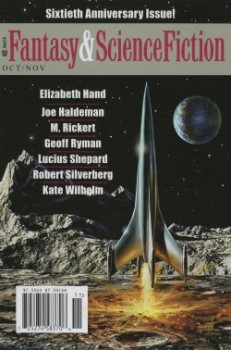 Fans of Tom Waits are often divided into two camps: those who favor the early boozy Kerouac, be-bop inspired crooner of life’s derelicts and losers up until he transmogrified beginning with the “Heartattack and Vine” album and “crossed over” into Kurt Weill cacaphonous orator of the absurd; fans of the later period sometimes disdain the earlier, and vice versa, despite the obvious connections. Me, I’m in the third camp as a huge admirer of both milieus. (I suppose there’s a further quarter of people who can’t stand Waits at all, but, much like the folks who still tiresomely maintain Dylan hasn’t done anything since his protest days, aren’t worth serious attention.)
Fans of Tom Waits are often divided into two camps: those who favor the early boozy Kerouac, be-bop inspired crooner of life’s derelicts and losers up until he transmogrified beginning with the “Heartattack and Vine” album and “crossed over” into Kurt Weill cacaphonous orator of the absurd; fans of the later period sometimes disdain the earlier, and vice versa, despite the obvious connections. Me, I’m in the third camp as a huge admirer of both milieus. (I suppose there’s a further quarter of people who can’t stand Waits at all, but, much like the folks who still tiresomely maintain Dylan hasn’t done anything since his protest days, aren’t worth serious attention.) Before he became a regular artist for Black Gate, Bernie Mireault was already something of a Renaissance man in the comics industry. He’s been a writer, artist, letterer, and highly acclaimed colorist, and worked with Matt Wagner (Grendel), Joe Matt, Mike Allred, and many others. His comics include Dr. Robot, Bug-eyed Monster, The Blair Witch Chronicles, and his masterpiece, The Jam.
Before he became a regular artist for Black Gate, Bernie Mireault was already something of a Renaissance man in the comics industry. He’s been a writer, artist, letterer, and highly acclaimed colorist, and worked with Matt Wagner (Grendel), Joe Matt, Mike Allred, and many others. His comics include Dr. Robot, Bug-eyed Monster, The Blair Witch Chronicles, and his masterpiece, The Jam. I say “first meeting that we know of” because Bernie and I were born in the exact same (and very small) place — a Canadian Air Force base in Marville, France — only a few years apart in the early 60s. Did we pass briefly as toddlers in the officer’s mess, and maybe compare our love for cartoons and comics while our fathers saluted each other over trays of french bread and beans? Probably not. But hey, man. It’s possible.
I say “first meeting that we know of” because Bernie and I were born in the exact same (and very small) place — a Canadian Air Force base in Marville, France — only a few years apart in the early 60s. Did we pass briefly as toddlers in the officer’s mess, and maybe compare our love for cartoons and comics while our fathers saluted each other over trays of french bread and beans? Probably not. But hey, man. It’s possible.

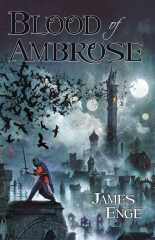 I was commenting the other day on the surplus number of wonderful S&S anthologies I’ve stumbled on since a friend and I began a collaborative shared world writing project a few weeks ago, both writing stories set in a fantasy/medieval city with a history and a river and neighborhoods and taverns and all the usual trappings. His background in world building (via D&D or whatever) is less than mine, and mine is quite scant, so our efforts have grown in odd bits and pieces: first the tavern, then the name of the city, then a mountain backed up against it, and so on.
I was commenting the other day on the surplus number of wonderful S&S anthologies I’ve stumbled on since a friend and I began a collaborative shared world writing project a few weeks ago, both writing stories set in a fantasy/medieval city with a history and a river and neighborhoods and taverns and all the usual trappings. His background in world building (via D&D or whatever) is less than mine, and mine is quite scant, so our efforts have grown in odd bits and pieces: first the tavern, then the name of the city, then a mountain backed up against it, and so on.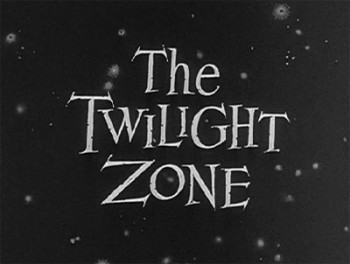
 The place is here, the time is now, and the journey into the shadows that we’re about to watch could be our journey.
The place is here, the time is now, and the journey into the shadows that we’re about to watch could be our journey.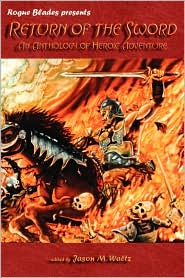 I read an interesting post the other day by a thoughtful blogster whose name I cannot now remember and whose post I cannot locate again, who professed his surprise at all the fans of Conan (and Sword & Sorcery in general) who were returning to the fold now, after falling away in the 1980s, after the last Big S&S Boom.
I read an interesting post the other day by a thoughtful blogster whose name I cannot now remember and whose post I cannot locate again, who professed his surprise at all the fans of Conan (and Sword & Sorcery in general) who were returning to the fold now, after falling away in the 1980s, after the last Big S&S Boom.